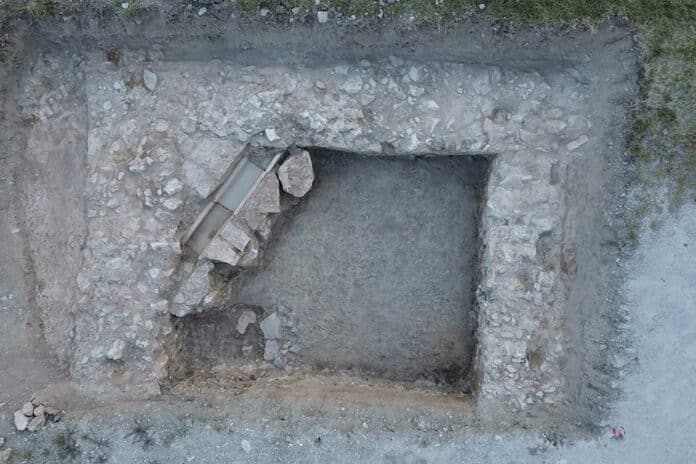Douglas Boin, Ph., and his team at Saint Louis University have made a significant archaeological discovery. They discovered an ancient Roman temple that dates to Constantine’s period.
They uncovered three walls of a monumental structure believed to be a Roman temple dating back to the fourth century AD. This finding provides valuable insights into the social transition from pagan gods to Christianity within the Roman Empire during Constantine’s period.
The recently discovered Roman temple, dating back to the fourth century AD, is considered a remarkable addition to the landscape of the specific region in Italy. This finding is expected to significantly contribute to our understanding of the ancient town, its urban layout, and the societal dynamics in the later Roman Empire. The temple’s existence highlights the continuities between the classical pagan world and the early Christian Roman world.
Boin focused his archaeological excavations in Spello, a well-known medieval city near Assisi, around 20 minutes away and approximately 2.5 hours north of Rome. The choice of Spello was influenced by a 4th-century letter from Emperor Constantine to the town’s residents about a religious celebration, guiding the exploration that led to the discovery of an ancient Roman temple.
The rescript, unearthed in the 18th century, revealed that the residents of Spello were allowed to celebrate a religious festival locally instead of traveling to a distant one. However, the condition was to build a temple dedicated to Constantine’s divine ancestors and the Flavian family and worship them. This highlights the multicultural nature of Roman society during that period.
Boin said, “There was a remarkable religious continuity between the Roman world and the early Christian world. Things didn’t change overnight. Before our findings, we never had a sense that there were actual physical, religious sites associated with this late ‘imperial cult practice.’ But because of the inscription and its reference to a temple, Spello offered a very tantalizing potential for a major discovery of an Imperial cult underneath a Christian ruler.”
Boin went to Spello and conducted underground imaging to identify potential ancient structures beneath the surface. After several weeks, they discovered promising images beneath a parking lot where the temple was believed to be. Through careful excavation, the team unearthed two connecting walls, followed by what Boin believes are the internal walls of the temple. This find is considered the most substantial evidence of the Imperial Cult in fourth-century Italy and the late Roman Empire, according to Boin.
Boin said, “There’s evidence from other places throughout the Roman world that Christian rulers supported imperial cult practices. We’ve known pagans worshiped at their temples in the fourth century, but those findings have all been small and inconsequential.”
“And we’ve known that Christians supported the imperial cult, and we’ve known that without any sense of where it would have happened. This temple bridges those two landmarks, and in that respect, it is unlike any temple that I know about from the Mediterranean world of the fourth-century Roman Empire. Any study of the imperial cult in the fourth century Roman Empire is now going to have to take account of this temple, which is an incredible discovery to make.”
“With the discovery, we can show how the societal changes of the time moved very slowly. Though Constantine was the first Roman emperor to famously convert to Christianity, it would take almost 70 years for Christianity to become the Roman Empire’s official religion under Emperor Theodosius. During that time, it still took many convincing and gradual shifts for those who worshiped pagan gods to convert to Christianity.”
“This changes everything about how we perceive the pace of social change and our impression of the impact of social and cultural change. This building, in a very radical way on its own, shows us the staying power of the pagan traditions that had been on the ground for centuries before the rise of Christianity. It shows us how the Roman emperors continued to negotiate their values, hopes, and dreams for the emperor’s and the Empire’s future without knocking down or burying the past.”
“We are on the cusp of giving people an obvious piece of evidence that really upends the neat and tidy ways people think about big moments of cultural change. Cultural changes are never as big as we think they are when living through them, and there’s a lot of gray area in between people’s customs and the broader society and culture.”
“And a lot of those can be left out of the story. So to have this temple potentially be a temple dedicated to Constantice’s divine ancestors as a way to worship the emperor in an increasingly Christian world at the time, it’s so weird, and I love that we can bring it to light.”
Boin made the announcement of this discovery at the annual meeting of the Archeological Institute of America.
